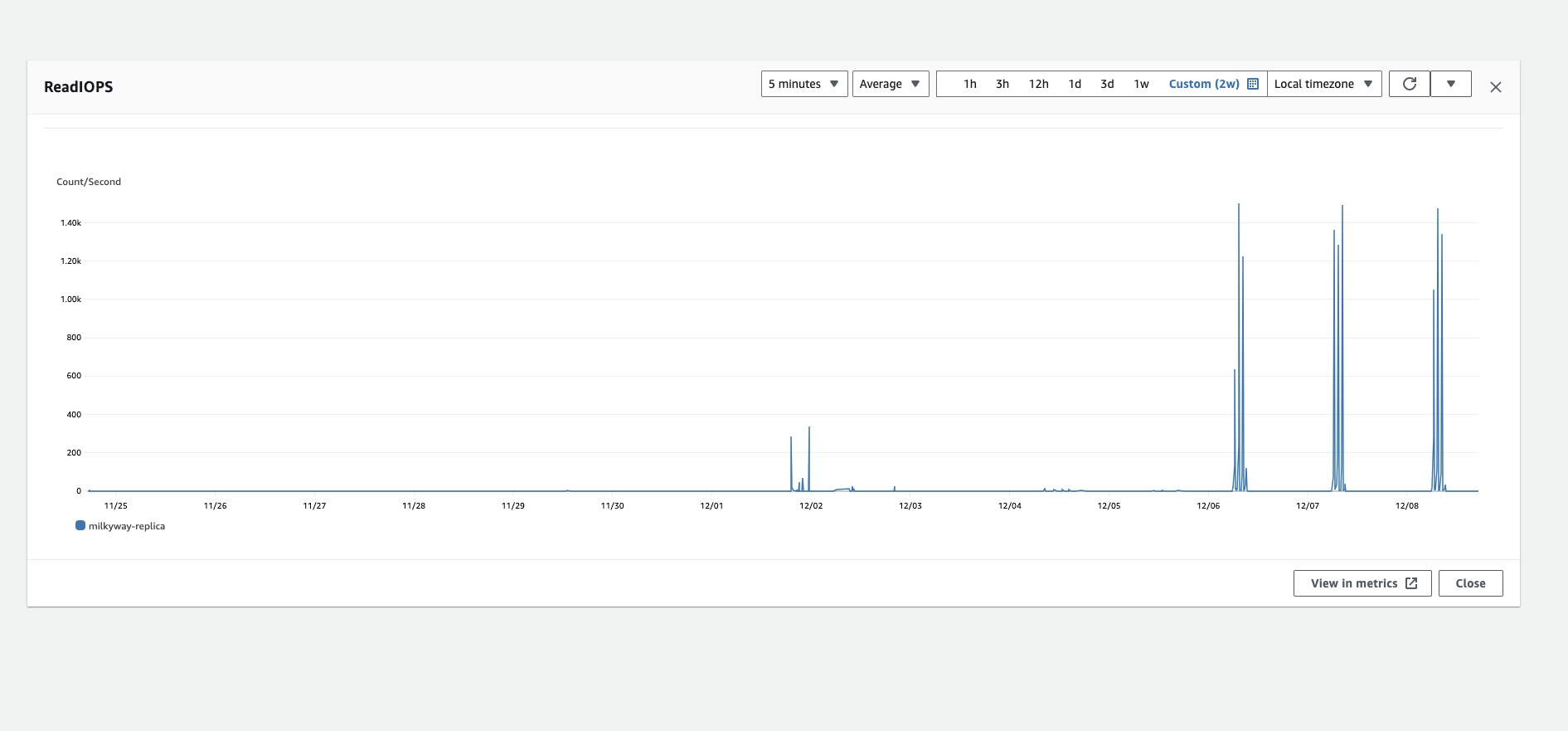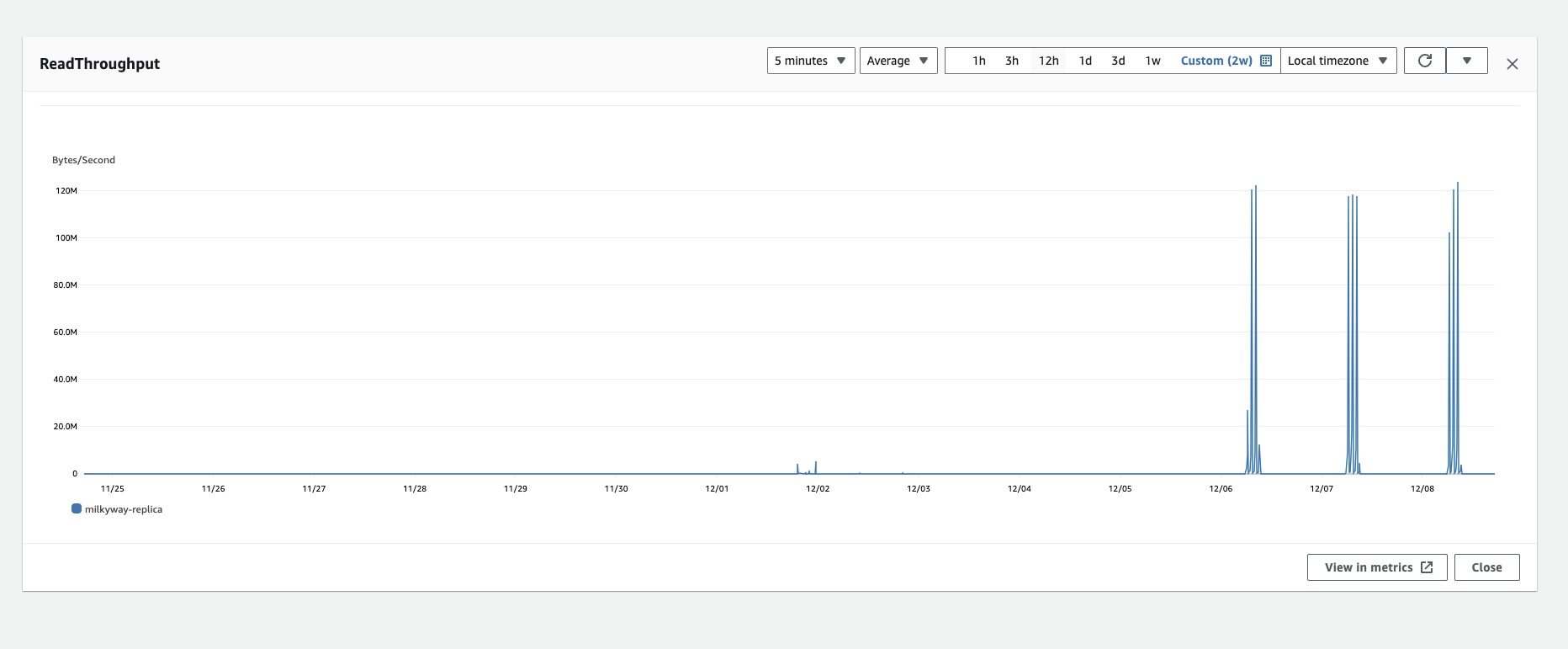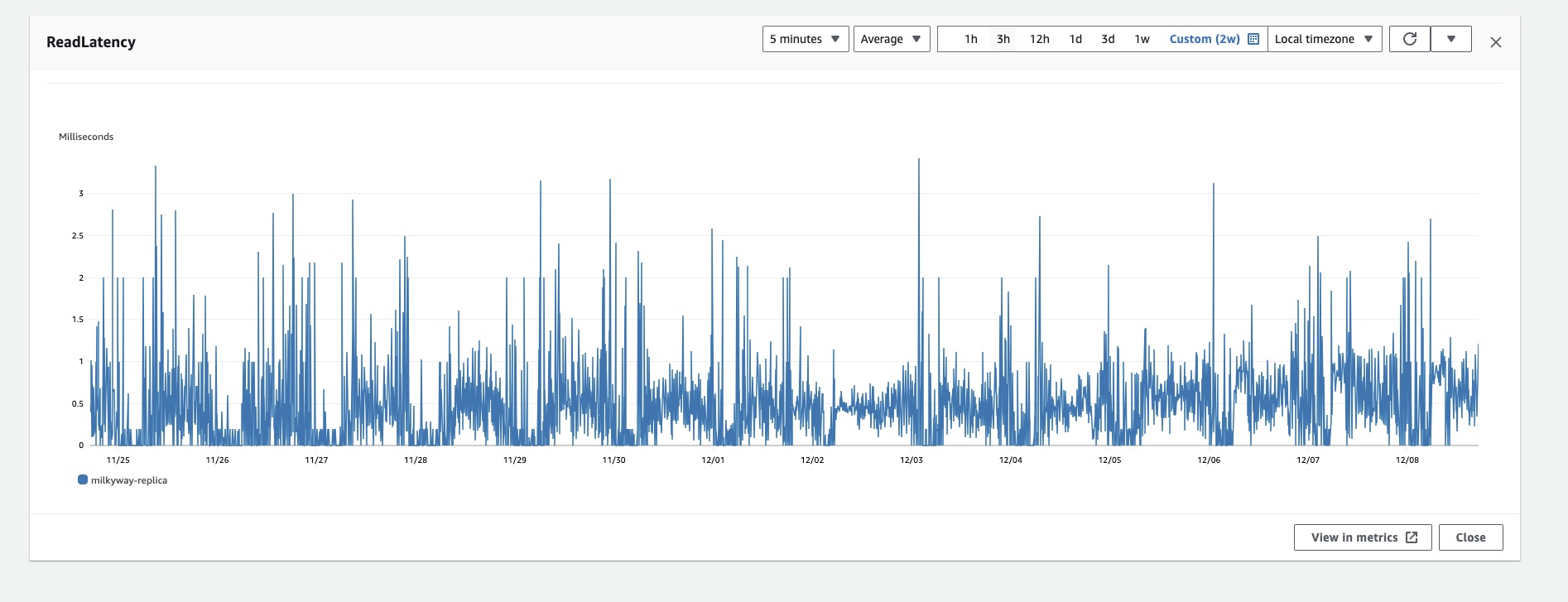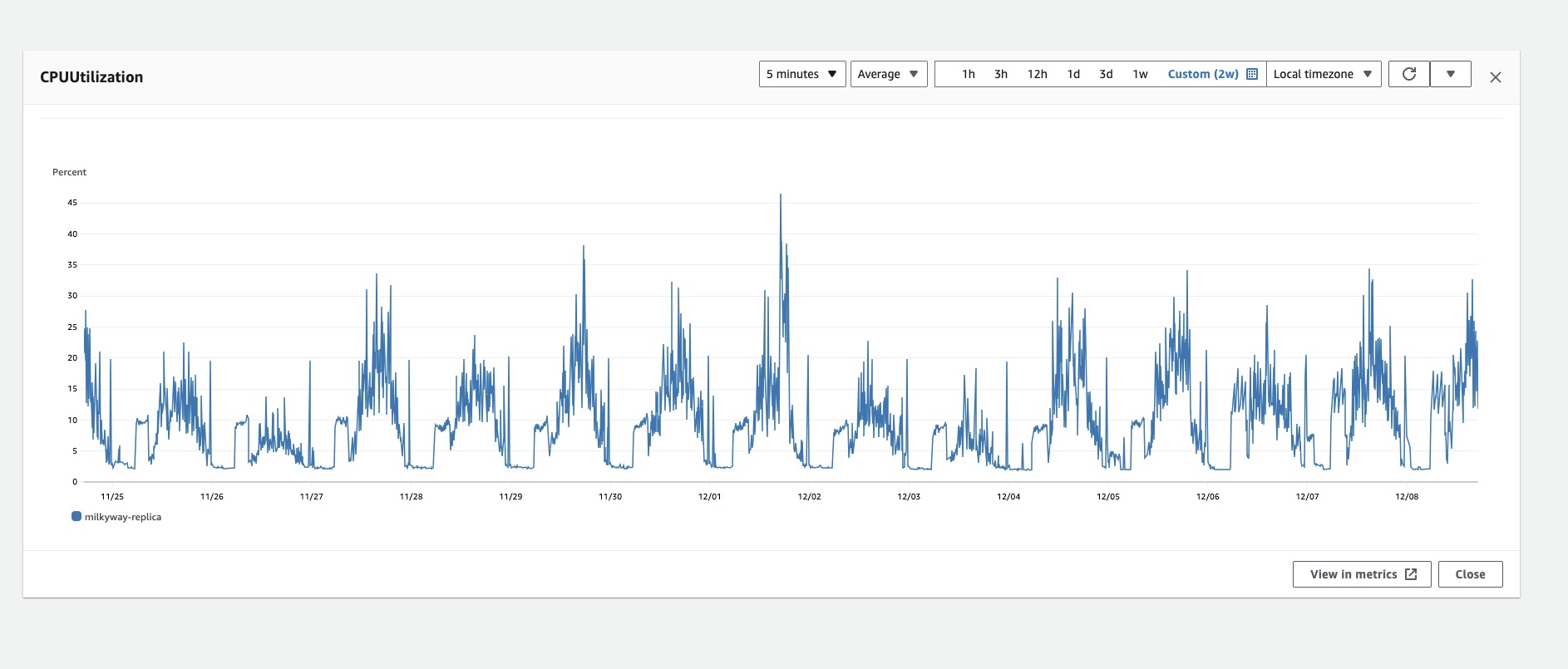We recently modified the storage type of one of our RDS databases from io1 with Provisioned IOPS (PIOP) of 3000 to gp3. Prior to this change, our read IOPS (Input/Output Operations Per Second) and read throughput metrics were stable and within expected ranges. However, since the switch, we've noticed significant spikes in these metrics, even though our traffic load has remained consistent with the levels we experienced last month.
This unexpected change is puzzling, and we're trying to understand the underlying reasons for these high values in read IOPS and throughput. To give you a clearer picture of the situation, I have attached screenshots of the metrics before and after the storage type change.
Could you please help us understand why we might be experiencing these spikes in read IOPS and throughput with the gp3 storage type? Any insights or recommendations you can provide would be greatly appreciated.
Attaching images related to ReadIOPS, ReadThroughPut, ReadLatency and CpuUtilization.



